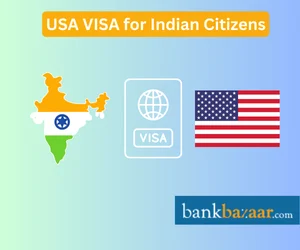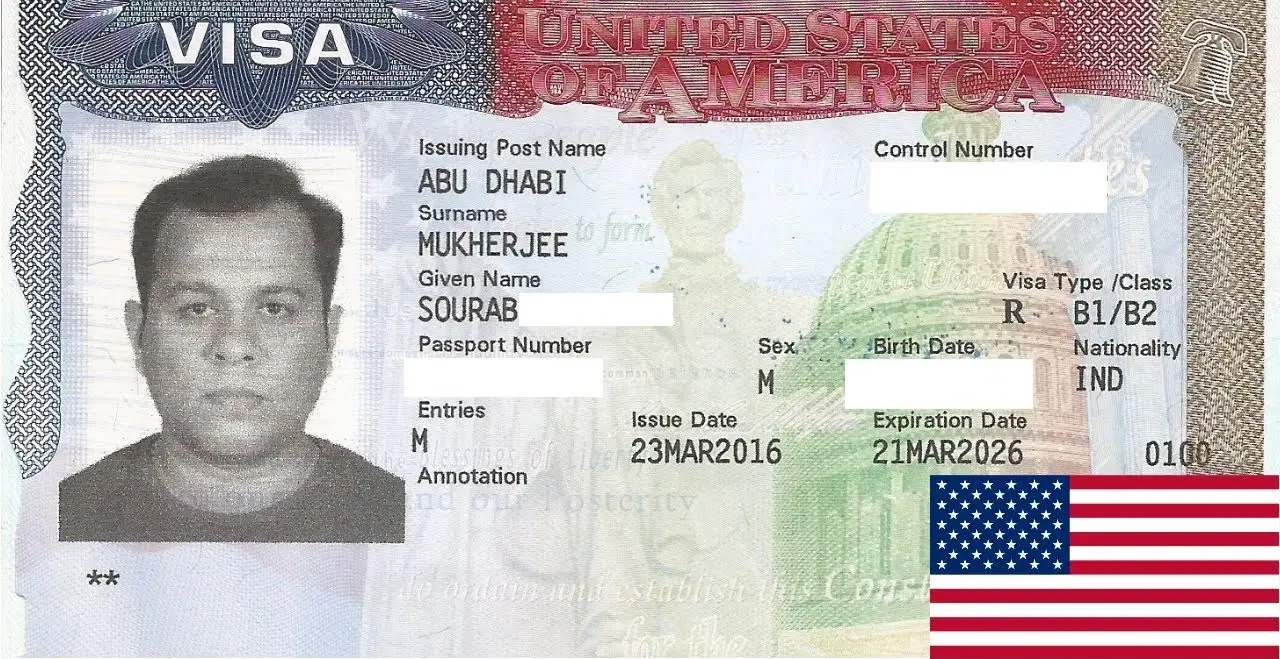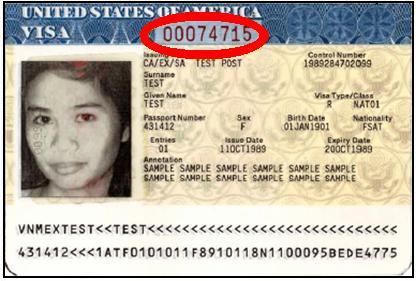Types Of US Visas: Everything You Must Know
Unlocking Opportunities: Important Info on US Visas for Indian People
Maneuvering the complexities of US visa choices is essential for Indian citizens intending to explore opportunities in the US. With numerous groups ranging from temporary site visitor visas to paths for long-term residency, recognizing the subtleties of each can significantly affect one's trip. This discussion will highlight important details, consisting of application procedures and eligibility criteria, that can equip individuals in their search of new experiences. As we unbox these vital facets, the inquiry emerges: what techniques can one utilize to boost their chances of a successful application?
Introduction people Visa Types
When traversing the facility landscape of US migration, comprehending the various kinds of visas offered is crucial for Indian citizens seeking entrance into the US (Types Of US Visas). The US migration system is mainly categorized right into two wide classifications: immigrant visas and non-immigrant visas
Immigrant visas are assigned for those intending to live completely in the US. These consist of family-sponsored and employment-based visas, where applicants typically call for a sponsor. Non-immigrant visas, on the other hand, provide to individuals seeking short-term home, such as tourists, organization visitors, and those traveling for particular purposes like work or research.
Within the non-immigrant category, several visa kinds exist, including B-1/ B-2 for company and tourist, H-1B for specialty professions, L-1 for intra-company transferees, and O-1 for people with amazing capacities. Each visa has distinct qualification demands and application processes, demanding detailed research to figure out the ideal category.
Recognizing these classifications is necessary for Indian citizens, as it allows them to navigate the application process a lot more successfully, guaranteeing they pick the correct visa kind to fulfill their certain demands and goals. US Visas For Indian Citizens.
Trainee Visa Options
For Indian citizens desiring study in the US, trainee visas present a crucial path to seek scholastic opportunities. The primary visa groups for students are the F-1 and M-1 visas.
The F-1 visa is designated for academic pupils enlisted in a full time program at a recognized organization, such as colleges and universities. This visa enables students to engage in on-campus employment and, under specific problems, join optional functional training (OPT) after finishing their level, giving important job experience in their area of research study.
Conversely, the M-1 visa is intended for professional or non-academic programs. It provides to students going after technological or occupation training, allowing them to enroll in non-degree programs. M-1 visa owners may take part in practical training, however it is usually extra minimal compared to the F-1 classification.
To get a student visa, applicants need to safeguard admission to an U.S. establishment, obtain a Form I-20, and show financial capacity to sustain their education and living expenses. Understanding these visa choices is considerable for Indian residents preparing to commence their instructional journey in the US.
Visa Categories
Many Indian people looking for work opportunities in the US might consider different classifications tailored to various specialist demands and qualifications. One of the most noticeable is the H-1B visa, created for skilled workers in specialty occupations needing a higher education and learning degree or its equal. It allows US companies to momentarily utilize foreign employees, with a cap on the number of visas provided each year.
One more important category is the L-1 visa, which promotes the transfer of employees within multinational companies. The L-1A visa is for managers and executives, while the L-1B visa is for workers with specialized expertise.
The O-1 visa deals with people with extraordinary capacities in their area, including scientific research, arts, or business. For agricultural or seasonal work, the H-2A and H-2B visas are offered, permitting employers to employ foreign employees for short-lived positions.
Family-Based Migration
Family-based migration provides a pathway for US residents and authorized long-term locals to reunite with their loved ones from India. This immigration classification is basic for maintaining domestic bonds and helping with the combination of family participants into USn culture. US people can seek for prompt loved ones, consisting of partners, kids, and parents, without dealing with yearly limits on visas. This expedited process substantially reduces waiting times for these close family members links.
In contrast, authorized irreversible residents might sponsor spouses and single youngsters, but they go through annual caps, causing longer wait times. The family-sponsored immigration system is divided right into two primary groups: immediate loved ones and family preference classifications. The previous includes those that have a straight connection with a united state resident, while the last encompasses more remote loved ones, such as brother or sisters and wedded youngsters of citizens, and youngsters of authorized permanent citizens.
For Indian residents looking for family-based immigration, understanding the subtleties of this system is essential. Correct paperwork and adherence to application methods are vital for effective sponsorship. By navigating via these complexities, households can work in the direction of reuniting and developing their lives with each other in the US.
Irreversible Residency Process
The procedure of acquiring irreversible residency in the US includes several key visa categories customized for Indian residents. Recognizing the application actions, consisting of needed documents and eligibility criteria, is vital for an effective result. Additionally, prospective candidates ought to recognize the expected timeline and particular requirements associated with each category.
Visa Categories Introduction
While passing through the complexities of the US immigration system, Indian residents seeking irreversible residency must familiarize themselves with different visa groups tailored to various scenarios. The primary path for irreversible residency is with employment-based visas, which are classified into numerous preferences, including EB-1 for individuals with extraordinary capabilities, EB-2 for experts holding postgraduate degrees, and EB-3 for competent workers. Each category has particular eligibility demands and processing times.

Diversity visas, although limited in number, supply a chance for people from underrepresented countries to apply for long-term residency with a lotto game system. In addition, humanitarian choices such as asylum and refugee condition offer paths for those dealing with oppression.
Comprehending these visa groups is important for Indian people, as they substantially affect the approach for acquiring permanent residency in the US. Each group's nuances and demands demand careful factor to consider to line up with individual situations and goals.
Application Process Steps
Guiding the application process for long-term residency in the US entails a number of key actions that have to be diligently followed to guarantee a successful outcome. The journey normally starts with identifying the proper immigration classification, such as employment-based or family-sponsored visas. Applicants have to collect necessary documentation, consisting of evidence of qualification, economic declarations, and individual recognition.
Once the category is identified, the following step is to file the Type I-130 (Request for Alien Loved One) or Type I-140 (Immigrant Petition for Alien Worker), depending upon the basis of the application. Complying with the approval of the application, applicants will certainly need to finish the National Visa Center (NVC) handling by submitting the called for costs and kinds.
Next off, the candidate should undertake a medical exam and obtain police clearance certificates. Once these are finished, a meeting will be set up at the US consulate or embassy. It is vital to prepare thoroughly for this interview, as it can considerably affect the choice on the application. Upon approval, the candidate will certainly get their visa, granting them permanent residency in the United States.
Timeline and Needs
Charting the timeline and needs for acquiring permanent residency in the US is crucial for Indian people seeking to develop a lasting visibility. The procedure primarily rests on employment-based or family-sponsored pathways, each with details requirements and timelines.
For employment-based migration, the procedure typically starts with a labor accreditation, which can take numerous months. When authorized, the employer files a Form I-140, Immigrant Application for Alien Employee, which can take an added six months to a year, relying on the processing center. Complying with I-140 approval, applicants may need to await their priority date to end up being present, which can vary substantially based on the candidate's classification and native land.
For family-sponsored migration, US people can request for immediate relatives, which typically results in faster processing. Nevertheless, various other household groups may involve longer wait times because of yearly caps.
Application Procedures
Understanding the application procedures for US visas is necessary for Indian people looking for access into the US. US Visa Categories India. This section will give a summary of numerous visa classifications and lay out the detailed process for using. By complying with these standards, applicants can browse the intricacies of the visa effectively
Visa Categories Overview
Navigating the various visa classifications offered to Indian citizens can be an intricate procedure, yet it is crucial for those seeking to travel, function, or study in the US. The US visa system is classified mainly into non-immigrant and immigrant visas, each serving distinct objectives.
Non-immigrant visas, such as B-1/ B-2 for company and tourism, F-1 for scholastic research study, and H-1B for specialized employment, permit short-lived keeps. Candidates must show their intent to return to India after their browse through.
On the other hand, immigrant visas, consisting of family-sponsored and employment-based groups, offer a pathway to permanent residency. These visas often call for sponsorship from a relative or employer in the US, along with a strenuous application procedure.

Step-by-Step Process
Normally, the application procedure for US visas includes numerous vital actions that applicants need to meticulously follow to assure a smooth experience. The very first action is to identify the ideal visa classification based upon the purpose of traveling, such as job, research study, or tourist. Once the classification is determined, applicants must finish the online DS-160 type, giving exact individual information and traveling information.
After sending the DS-160, candidates must pay the visa fee, which varies by visa type. Next, schedule a consultation for a visa interview at the nearest US Consular office or Consulate. US Visas For Indian Citizens. It is vital to prepare for the meeting by event required records, consisting of a legitimate visa, visa confirmation, cost payment receipt, and any type of sustaining documentation certain to the visa classification
On the day of the meeting, arrive promptly and outfit suitably. During the interview, be prepared to respond to concerns regarding your travel objectives, monetary stability, and ties to India. Finally, if authorized, the visa will certainly be marked in the visa, permitting travel to the US. Following these steps ensures an efficient and effective application procedure for Indian residents.
Tips for an Effective Application

Make certain that all kinds are finished precisely and honestly. Little errors or omissions can result in hold-ups or even denials. It is advisable to collect all required supporting documents, consisting of monetary statements, work letters, and proof of connections to India, which show your intent to return post-visit.
Plan for your visa interview by practicing reactions to usual inquiries associated to your traveling plans and background - How To Get US Visa From India. Confidence and clearness can substantially affect the policeman's impact. Think about looking for help from reliable immigration specialists if you really feel overwhelmed.
Regularly Asked Concerns
What Are the Processing Times for US applications?
Processing times for US visa can vary substantially based on the visa type, application quantity, and the candidate's area - US Visas For Indian Citizens. Usually, applicants ought to prepare for a processing duration ranging from a couple of weeks to several months
Can I Change My Visa Status While in the US?
Yes, individuals can transform their visa condition while in the US, provided they satisfy eligibility needs and follow correct procedures. It is crucial to file the proper application with US Citizenship and Immigration Solutions (USCIS)
Exist Age Limits for US Visa Applicants?
There are normally no details age restrictions for US visa applicants; nonetheless, specific visa categories may have age-related eligibility criteria. It is necessary to evaluate the needs for each visa type to ensure conformity.
What Are Usual Reasons for Rejection?
Common reasons copyright rejection include not enough funds, failure to demonstrate connections to the home country, insufficient application, absence of appropriate documents, previous immigration violations, and failure to meet qualification criteria for the specific visa category.
Exactly How Can I Appeal a Visa Rejection Choice?
To appeal a visa rejection, examine the consular officer's click here reasons, collect supporting documentation, and submit an official appeal to the proper authority, making sure to stick to defined timelines and step-by-step requirements for the allure procedure.